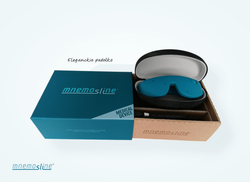Mnemosline
( number of products: 1 )Medical-Scientific History of Mnemosline® – The Secret to Brain Longevity
Can We Recover Lost Brain Functions?
After retiring in 1993, the renowned Professor Francesco Ferro Milone—a distinguished neurologist, neurosurgeon, neurobiologist, and psychiatrist—posed a fundamental research question: Is it possible to restore brain functions lost with age?In pursuit of an answer, he collaborated with the "Alzheimer's Center" at Villa Rota Barbieri in Vicenza and the non-profit organization Prosenectute, which provides support for seniors. He assembled an interdisciplinary research team that included:
Prof. Adolfo Porro – Geriatrics specialist, co-founder of Prosenectute,
Prof. Franco Binda – Recognized geriatrician,
Prof. Tullio Minelli – Mathematician from the University of Padua, who developed innovative EEG analysis methods.
Their research, conducted between 1997 and 2013, resulted in several master's theses and a doctoral dissertation focused on nonlinear EEG* analysis in the study of neurodegenerative processes.EEG (Electroencephalography) is a non-invasive diagnostic method that examines the brain's bioelectrical activity.
Groundbreaking Research
Between 2004 and 2008, the team conducted extensive studies on 640 individuals aged 65–85. The experiments took place at the Alzheimer's Day Center Villa Rota Barbieri and throughout the Province of Vicenza. Participants underwent detailed psychological and electroencephalographic (EEG) tests following a protocol approved by the Ethical Committee of Physicians in Vicenza.The goal was to discover effective methods for supporting brain function. The researchers found that stimulation with intermittent light (SLI) at a 650 nm wavelength and an alpha wave frequency (8–12 Hz) induced synchronization of alpha waves in the brain. This effect was particularly evident in individuals with mild cognitive impairment (MCI), and the differences in EEG results before and after therapy were statistically significant (p < 0.001).Spectral EEG analysis demonstrated that the SLI method was more effective when using red light (650 nm) compared to shorter wavelengths.
Significance of the Discovery
The research demonstrated that regular stimulation with SLI light:✔ Prevents cognitive decline,✔ Significantly improves memory test scores after 12 months,✔ Positively impacts mood and overall quality of life.
The Birth of Mnemosline®
The study’s results led to the development of the Mnemosline® project, aimed at creating a device that supports brain regeneration. The first prototype was created in 2000 and tested by selected neurologists in Italy. Over the years, new versions of the device were developed in parallel with ongoing research.The currently available version of Mnemosline® has been designed for independent use. It is an innovative, technologically advanced, effective, and user-friendly device, even for seniors."The Mnemosline® device is a standalone device. It doesn't require a Bluetooth/WiFi connection or an application." – Prof. Francesco Ferro Milone.
Professor Milone's Legacy
Until his passing on July 21, 2022, Professor Francesco Ferro Milone actively supported the advancement of the SLI method. His legacy continues through a dedicated team of scientists, and Mnemosline® is helping individuals facing neurodegenerative challenges, low mood, and cognitive disorders. It is also beneficial for those seeking to maintain optimal brain health at any age.This discovery stands as proof that science and technology can effectively support brain longevity in a natural and non-invasive way.
Could Light Therapy Be the Key to a Healthy Brain?
If you want to maintain your brain’s health and improve your quality of life, the SLI method may be a solution worth considering. Mnemosline® is the result of years of research and The Mnemosline® medical device complies with the requirements of Directive 93/42/EEC with amendments (Directive 2007/47/EC), Legislative Decree 46/97, and is classified as a Class 1 medical device.

